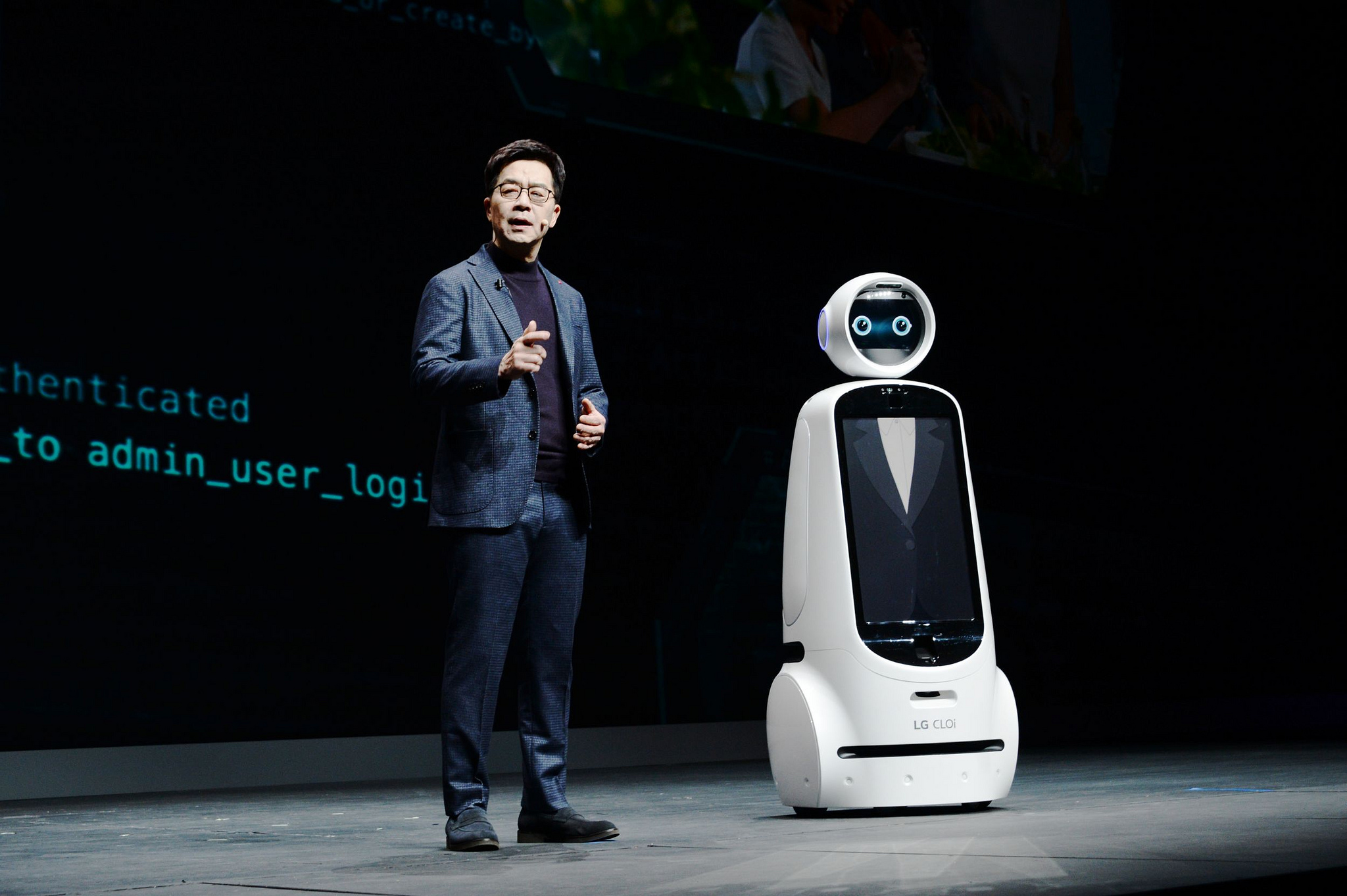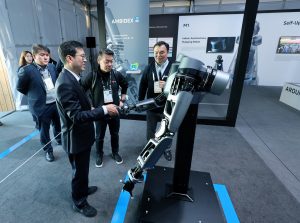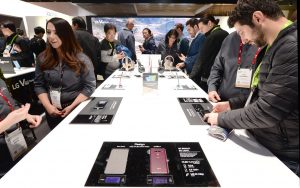The latest in futuristic gagets from CES 2019

While some vendors use the annual Consumer Electronics Show (CES) as an opportunity to unveil new market-ready products, others use it as an opportunity to demonstrate their vision for futuristic gadgets. This year, at CES 2019, ambitious vendors added humanoid robots, helicopter taxis, and hoverbikes to the lineup of more traditional electronic goods.
EvdoDepotUSA representatives Chandler Blake and Tanner Wentworth attended CES 2019 this January in Las Vegas. “There was everything technology-wise imaginable, from drones that are able to replace firefighters, to autonomous vehicles, to hover-bikes able to fly sixteen feet in the air,” says Wentworth. “There was even a machine designed to play you in ping-pong!”
Blake and Wentworth spent most of their time testing networking equipment, learning about innovations in mobile broadband, and examining market-ready Internet of Things (IoT) technology, but they also got a chance to see some of the show’s more experimental prototypes. Here are a few of the futuristic devices that generated buzz at CES 2019:
Futuristic advancements in artificial intelligence, transportation
- The UBTECH Walker is a humanoid robot with full-body movement, as well as the ability to lift weights, perceive depth, and maintain stability when bumped or pushed. The robot, which has seen massive improvements in functionality over the last couple years, was definitely one of the show’s most futuristic and visionary prototypes.
- Many of the most impressive innovations at CES 2019 were in the transportation industry BELL, for example, unveiled an early prototype the Nexus VTOL Air Taxi, a four-person air transportation vehicle that gets its lift from six ducted fans, which allow smooth transitions between vertical and horizontal flight.
- The HoverSurf hoverbikes, too, now use ducted fans for smooth vertical liftoff and easy operation. At CES 2019, HoverSurf displayed several new hoverbike models, including one designed for police use. In fact, HoverSurf gifted one of its earlier prototypes to the Dubai Police Department.
- While it doesn’t hover in the air, the BMW Self-Driving Motorcycle performs impressive stunts on land. The self-driving motorcycle can start, turn, decelerate, and stop based on what’s happening around it or based on input from someone controlling the motorcycle remotely.

Innovations in energy efficiency and sustainability
Many of the most ambitious projects at CES 2019 utilized energy-efficient and sustainable technology in their designs. “Personally I am very interested in new environmentally friendly technology,” says Blake. “So I was really fascinated with the new hydrogen fuel cell technology, and how some companies have begun to use it on commercial products, like motorized bikes.”
Motors that use hydrogen fuel cell technology make very efficient use of natural gas. Vehicles with these motors, then, are more efficient and cleaner than traditional vehicles that use diesel fuel or petroleum gas. Hydrogen fuel cell technology emits lower levels of the greenhouse gases NOx, SO2, and CO2 than the fuel technology we use now.
Futuristic Gadgets? Yes. Realistic? Maybe.
Many of the futuristic prototypes we saw at CES 2019 will never be market-ready products that people can purchase or use. Vice President of BMW Motorrad Americas Michael Peyton, for example, was upfront about the fact that “there is no consumer plan” for the self-driving motorcycle. “This is not going to replace your pizza delivery scooter,” he told reporters.
Even so, if you want to know what consumer electronics will look like five years or a decade from now, there’s no better place to look than CES. “The event is a must see to anyone who is looking to get a sneak peek look at all of the latest and greatest technology before it’s released to the public,” says Wentworth.
Want to learn more about the internet-connected innovation that’s already here? Check out our smart home and business solutions.






